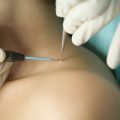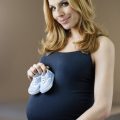- The body after childbirth is "loosened up and shattered"I want to somehow assemble it, not only physically, but also energetically. No wonder: nine months in you life developed, and with the birth of the baby the physical connection suddenly broke down, - says Ulyana Aligova, instructor of perinatal and postnatal yoga at the Perm studio "Cora", dole. - In a natural and humane approach to motherhood, there is the term "fourth trimester of pregnancy". Its meaning is that for the first three months we "wear out" the baby, but already on ourselves: skin-to-skin contact, breastfeeding, wearing on hands, sleeping together and taking warm baths with the baby. With this approach, the needs of mother and newborn are fully met. If only there were assistants to the household! As for special physical activities, they are not required in the early postpartum period. It is about the first about forty days - the time that is allocated to the mutual adaptation of mother and child to a new life (this period is allocated in almost all cultures). Allow yourself to relax and let the body recover. After this time, you can begin practicing yoga or other physical activities. It is recommended to do this very gently and gradually.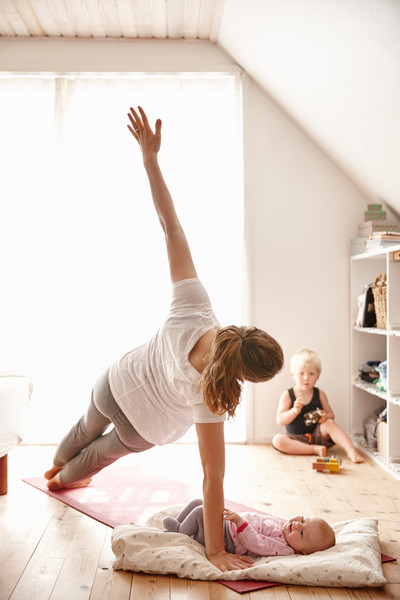 The child will take lessons as a game with his mother. Photo: Getty Images The most vulnerable female places after childbirth are those that were subjected to severe stress and stretching during pregnancy: the abdomen (the uterus and its ligaments, the white belly line, the skin and the muscles of the abdominal wall), the pelvic bones, if you gave birth naturally, and the muscles of the pelvic floor and perineum. With these zones it makes sense to work painstakingly and systematically. Restore the tone of the muscles of the birth canal (he also - the pelvic floor) will help such an exercise: lying on your stomach, while reducing these muscles and relax the buttocks. Conversely, relax the muscles of the birth canal and shorten the gluteal muscles. A woman who gives birth is easier to feel the muscles of the pelvic floor than a nulliparous: for this, it is necessary to contract (draw in) the internal muscles at the level of the upper margin of the pubic symphysis (joints of bones), passing to the sides and back to the coccyx, - these are the muscles of the pelvic floor, the eight connecting muscles vagina, buttocks and a little lower abdomen.
The child will take lessons as a game with his mother. Photo: Getty Images The most vulnerable female places after childbirth are those that were subjected to severe stress and stretching during pregnancy: the abdomen (the uterus and its ligaments, the white belly line, the skin and the muscles of the abdominal wall), the pelvic bones, if you gave birth naturally, and the muscles of the pelvic floor and perineum. With these zones it makes sense to work painstakingly and systematically. Restore the tone of the muscles of the birth canal (he also - the pelvic floor) will help such an exercise: lying on your stomach, while reducing these muscles and relax the buttocks. Conversely, relax the muscles of the birth canal and shorten the gluteal muscles. A woman who gives birth is easier to feel the muscles of the pelvic floor than a nulliparous: for this, it is necessary to contract (draw in) the internal muscles at the level of the upper margin of the pubic symphysis (joints of bones), passing to the sides and back to the coccyx, - these are the muscles of the pelvic floor, the eight connecting muscles vagina, buttocks and a little lower abdomen.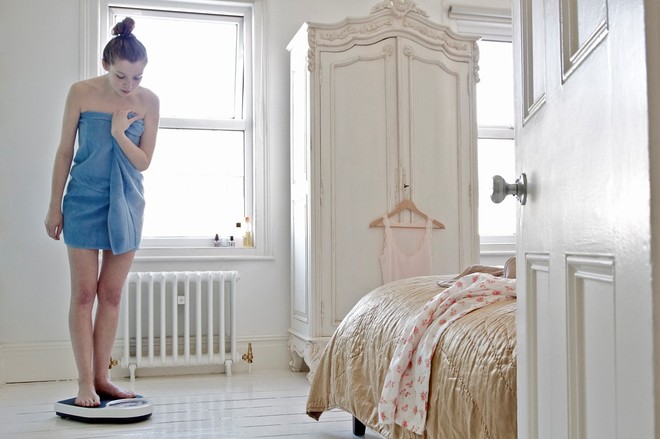 Do not strive to lose weight dramatically. Photo: Getty Images2. Work with the divergence of the abdominal muscles implies the strain of the deep abdominal muscles on exhalation. Lie on your back, bend your knees so that the feet are pointed to the floor. On exhalation tighten the muscles of the pelvic floor and abdominal area below the navel. On the breath relax. Repeat the exercise daily for a total of 50-100 approaches.On the exhalation, this is the key point: to swing a press in the traditional sense in the first six months after delivery is strictly forbidden! The uterus during pregnancy is increased a thousandfold, the abdominal organs are repositioned, the ligament of the uterus stretch, change intra-abdominal pressure ... Treat your body carefully, do not provoke an even greater divergence of the muscles of the press and fixing them in this form. If you do not have special exercises for postpartum recovery, just do not try to pump up the press in the first six months! 3. The most important after the birth exercises for the opening of the chest and straightening the spine: postures sitting and standing with a straight back (the simplest and most convenient - sukhasana - "comfortable pose", tadasana - "pose of the mountain.") From the sitting position, you can make twists on the belly, turning then to the right, then to the left and fixing the look back over the shoulder. When performing the "pose of the mountain" standing, it is necessary to twist the coccyx "under you," to focus on finding the balance of the feet and leveling the pelvis.
Do not strive to lose weight dramatically. Photo: Getty Images2. Work with the divergence of the abdominal muscles implies the strain of the deep abdominal muscles on exhalation. Lie on your back, bend your knees so that the feet are pointed to the floor. On exhalation tighten the muscles of the pelvic floor and abdominal area below the navel. On the breath relax. Repeat the exercise daily for a total of 50-100 approaches.On the exhalation, this is the key point: to swing a press in the traditional sense in the first six months after delivery is strictly forbidden! The uterus during pregnancy is increased a thousandfold, the abdominal organs are repositioned, the ligament of the uterus stretch, change intra-abdominal pressure ... Treat your body carefully, do not provoke an even greater divergence of the muscles of the press and fixing them in this form. If you do not have special exercises for postpartum recovery, just do not try to pump up the press in the first six months! 3. The most important after the birth exercises for the opening of the chest and straightening the spine: postures sitting and standing with a straight back (the simplest and most convenient - sukhasana - "comfortable pose", tadasana - "pose of the mountain.") From the sitting position, you can make twists on the belly, turning then to the right, then to the left and fixing the look back over the shoulder. When performing the "pose of the mountain" standing, it is necessary to twist the coccyx "under you," to focus on finding the balance of the feet and leveling the pelvis.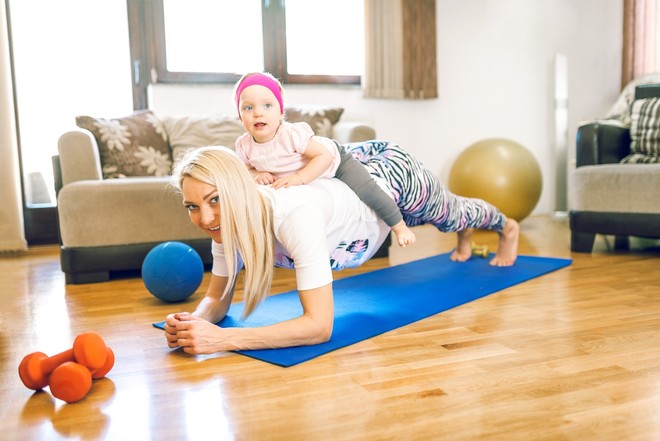 An older child can help mom duringExercisePhoto: Getty Images4. Postures for the closure of the pelvis (such as gomukhasana - "pose of the head of a cow" or garudasana "pose of the eagle"), as well as exercises for tightening the muscles of the pelvic floor (inside the pelvis) and the perineum (these muscles of the external genital organs) have a beneficial effect on the physical and psychological Mom's health, solving the issues of the very "closing of the body" after childbirth. Exercises for the disclosure of hip joints are strictly forbidden to do the first six months after childbirth due to physiological softening of the bones after childbirth and the need to restore them to their usual state.
An older child can help mom duringExercisePhoto: Getty Images4. Postures for the closure of the pelvis (such as gomukhasana - "pose of the head of a cow" or garudasana "pose of the eagle"), as well as exercises for tightening the muscles of the pelvic floor (inside the pelvis) and the perineum (these muscles of the external genital organs) have a beneficial effect on the physical and psychological Mom's health, solving the issues of the very "closing of the body" after childbirth. Exercises for the disclosure of hip joints are strictly forbidden to do the first six months after childbirth due to physiological softening of the bones after childbirth and the need to restore them to their usual state.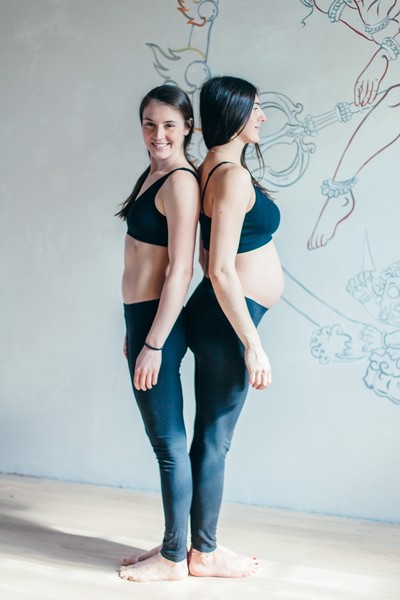 Doula (birth assistant) Ulyana Uzhegova(left) with sisterPhoto: Oksana GudoshnikovaGeneral principles of effective physical exercise:- twists on the stomach help to quickly restore the tone of the skin of the abdominal cavity;- lateral stretching of the body and arms improves blood circulation and general well-being, promotes lactation, relieves fatigue;- daily joint gymnastics gives a good mood and good health.
Doula (birth assistant) Ulyana Uzhegova(left) with sisterPhoto: Oksana GudoshnikovaGeneral principles of effective physical exercise:- twists on the stomach help to quickly restore the tone of the skin of the abdominal cavity;- lateral stretching of the body and arms improves blood circulation and general well-being, promotes lactation, relieves fatigue;- daily joint gymnastics gives a good mood and good health.

Making Money with Desserts: Success Stories
Evgeniya Polischuk (Fedutinova) instagram:@evgeniyafedutinovavk.com/janeshomebaking– It all started with baking for family and friends. Gradually, I started posting photos of my baked goods on Instagram – and orders started coming in. I made my first custom-made cake on October 13, 2014, and a little earlier I started making macaroons and cupcakes. You could say that the business “found me”, I am very […]

Soups are cold recipes with photos
Cold cucumber soup with yogurt and lemonsorbet from the chef of the restaurant La Taverna Alexander Zhurkin Photo: Getty Images Ingredients: Plain yoghurt – 125 g Cucumber – 150 g Lemon/lime sorbet – 50 g Cocktail shrimp – 24 g Fresh ginger juice – 1 g Lime juice – 5 g Fresh orange juice – 5 g Parsley – 1 g Pink pepper – 1 g Watercress – […]

barbeque kebab
Pork tenderloin in glaze Photo:Dmitry Bayrak/dbstudioPreparation time: 20 minutes + marinating time.Calories: 454 kcal per serving.For 4 servings: 4 pork tenderloins (approximately 300 g each), 1 onion, 2 cloves of garlic, 1 tsp. lemon zest, 1 tsp. lemon juice, a pinch of ground cumin, coriander and turmeric, 1 tbsp. vegetable […]

Pierre Duacan: dietary recipes: Ducane diet
Beetroot soup Photo:Season’S, Luxury Hotels RepresentationYou will need:· Boiled beetroot – 60 g· Fresh cucumbers – 20 g· Red radish – 20 g· Green onions – 10 g· Egg – 1 pc.· Drinking mineral water – 200 g· Salt – 1 gPreparation:· Boil the egg and beetroot.· Grate the cucumbers, radish and part of the beetroot. Put everything […]
